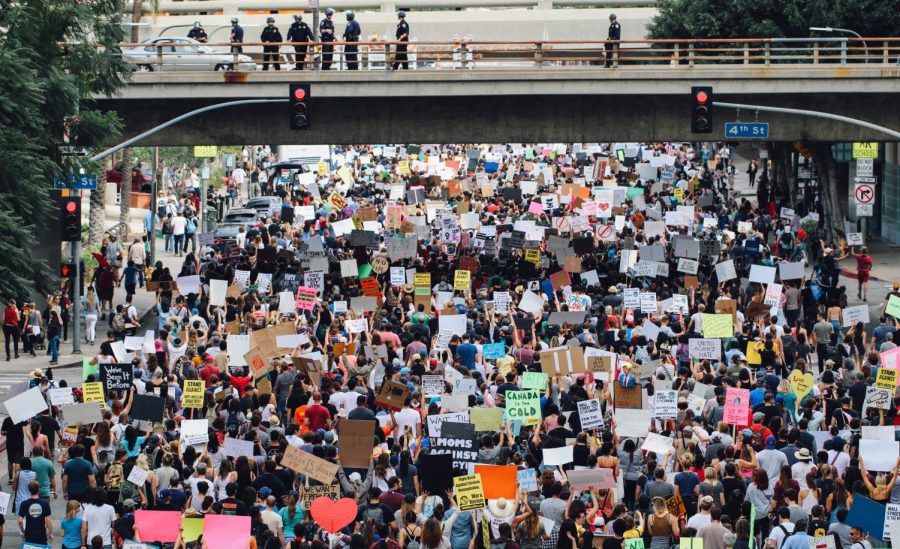Identifying why protests work
UNSPLASH PHOTO COURTESY OF Alex Radelich
The popularity of protests has sparked curiosity of how they are so effective at making change in numerous countries to fight various issues. https://unsplash.com/license
November 24, 2022
From University of California employees striking for fair labor to Iranian women marching for their rights, protests of different magnitudes have sparked all over the world. Among this social unrest, many have questioned the impact of protests, citing that strikes barely affect the profits and policies of large corporations. However, if well-planned and organized with proper tactics, protests can more often than not yield actionable change.
The Nov. 17 nationwide Starbucks worker strike, the “Red Cup Rebellion,” proves just that. Instead of handing out reusable, red holiday cups on Starbucks’ Red Cup Day, unionized employees from over 100 branches across the US distributed cups that read “Starbucks Workers United.”
Starbucks employee Mollyn Lipowsky told AP News how striking for fair labor laws on one of the company’s biggest days of the year puts a dent in their profits.
“We are out here protesting Starbucks on Red Cup Day because we want to get them where it hurts, get them with their money,” Lipowsky said.
Targeted protests like this work in the sense that enormous pressure is put on companies, which lose production, lose money and lose customers.
A movement of a much different scale that is seeing similar results is the ongoing “Hijab Revolution’’ against The Islamic Republic of Iran. Demonstrations are being led by women in response to 22-year-old Mahsa Amini being killed in police custody for not complying with Iran’s dress code.
The recent Iranian movement has sparked the most unified public challenge to the government in years. After Amini’s death, there were near-immediate calls for the abolishment of the Islamic regime and women have burned their hijabs, cut locks of their hair as a symbol and marched on the streets to demand not just an end to the hijab laws, but an end to the regime itself.
In conjunction with these pronounced demonstrations is the fact that women are at the forefront of Iran’s movement. According to the New York Times, researchers say womens’ involvement in protests makes the cause appear more legitimate to observers and security forces may be less violent in responding.
The strategies carried out by these protestors will undoubtedly bring about change: it is unimaginable that hijab enforcement will be as rigorous as before Mahsa Amini, even if the law requiring it remains on the books.
The spike in protests goes hand-in-hand with the prevalence of political polarization worldwide. The deepening divisions across social lines because of continuously debated issues has led to some distasteful protest tactics. The recent art destruction by radical climate change activists, for example, is not a method to evoke actionable change.
Protests targeting famous works of art began in 2021 in the UK, instigated by the group “Just Stop Oil.” People gluing themselves to Edvard Munch’s ‘The Scream’ in Norway and throwing pea soup over a Vincent van Gogh painting in Rome are just a few of the actions that have been taken to support their cause.
A protest is most often successful with the bandwagon of supporters. When a protest group with strong public support turns violent or utilizes radical methods like destruction of famous art, people may perceive them as less reasonable. According to a new study by Stanford sociologist Robb Willer, this leads people to identify with them less, and ultimately become less supportive.
A movement has the greatest chance of gaining support when its opposers begin to find understanding. If protests become unruly and destructive, the opposition uses it as evidence against the rationality of the cause.
It is clear that the success of protests is defined more by the persuading or pressuring tactics employed rather than the crowd size. In the long term, protests work when they can undermine the most important pillar of power: legitimacy.






